Why gooseberries do not bear fruit, and how to fix it
The gooseberry is a sturdy shrub, it is hardy and grows even on marginal soil. But sometimes gardeners are faced with the fact that gooseberries do not bear fruit. Before rooting out "useless" landings, you should figure out why this is happening. One of the reasons is age: too young bushes do not produce berries. Other reasons are inappropriate growing conditions, pests and infections. All these factors are quite correctable.
Life cycle
The average life span of a gooseberry is 18 years. On most shrubs, the first berries appear only at 4 years old, until that time you should not worry about the lack of berries. If young shoots appear regularly, the curtain will yield a harvest in its own year.
Exceptions to the general rule:
- Spring, Grushenka, Northern Captain and Venets Exist - these are early varieties that begin to bloom as early as 2 years old;
- Date and Belarusian Sugar are old-born varieties. Although they give the first harvest at 4-5 years, the maximum berries (up to 15 kg per bush) are given at 8-10 years.
Advice
Old, dried branches do not bear fruit, and besides, they shade and thicken the curtain, and the less light and air the ripening berries receive, the more sour and finer they are. This is why pruning and shaping the gooseberries is so important.
Uncomfortable conditions on the site
Gooseberries don't like shade. Due to the deficiency of ultraviolet radiation, the bush weakens, gets sick more often, the berries are worse tied and become smaller. The same thing happens with thickening.
Groundwater located in the immediate vicinity of the root system triggers the decay process. The best option in this case is to transplant the gooseberries before they are badly damaged. Another option is to organize a drainage diversion of groundwater.
The gooseberry blooms earlier than the rest of the fruit and suffers more often due to unfavorable weather conditions. Frosts spoil flowers, and without them fruiting is impossible. The absence of rain, as well as their excess, spoil the pollen, and the ovaries do not form. The varieties Mashenka and Krepysh are especially sensitive in this regard. Covering material will protect the curtain from cold weather and drafts, sprinkling with warm water from drought.
Agrotechnical blunders
The worst care mistakes for gooseberries are:
- excess or scarcity of watering,
- neglect, neglect of pruning and shaping,
- nitrogen fertilization during the flowering period,
- lack of dressing - the soil is depleted and the bushes are weakening,
- infection when pruning with a dirty tool or after a procedure, due to the fact that the sections are not processed with garden varnish.
Advice
Don't neglect mulching. It protects the gooseberry roots and retains moisture.
Pests
Especially harmful are the fire, which eats the berries from the inside and envelops the outside with cobwebs. Because of this, the fruits turn red ahead of time, and then they begin to rot and rot right on the branches.
Currant glass, gooseberry moth and gooseberry sawfly eat up the buds, the leaves do not form or grow poorly, so that the shrub sometimes does not have enough strength to bloom. At best, the harvest will be frail.
Aphids, scale insects, and other sucking parasites extract juice from stems and leaves, which can also weaken the gooseberry so that it does not produce berries.
Diseases
Most often, gooseberries are attacked by fungi:
- powdery mildew covers the fruits with a whitish bloom, due to which all the berries crumble, without treatment the bush dies in several years;
- with anthracnose, the shoots stop growing, and the berries lose their sweetness and fall off along with the brown leaves;
- goblet rust, the fruits are also deformed and crumbled.
Viruses sleeping in soil and water also cause crop loss. They are transmitted by sucking insects and untreated tools. The most common virus is the gooseberry mosaic, which covers the leaves with yellow spots. As a result, the plant weakens, and the berries become smaller and crumble.
How to save a bush
Of course, if it's age, you just have to wait for the deadline. Improper conditions need to be corrected in order to obtain a stable harvest. Too old bushes, older than 10 years, it makes sense to remove, leaving young shoots for divorce.
Recommendations for agricultural technology:
- After winter, a weakened plant needs nitrogen to grow green mass. Add 2 tablespoons to the bucket. l. ammonium nitrate and pour this mixture over the soil near the gooseberries.
- When flowering is over, sprinkle the soil with a spoonful of superphosphate in a bucket of water. Its main component is phosphorus, which improves the absorption of nutrients. The fertilizer also contains nitrogen, but in a relatively low concentration.
- Use ash in the fall. It not only contains phosphorus and potassium, but also repels insects. For organic matter, give preference to manure and compost. But don't overdo it.
- In some cases, feeding is unnecessary. If fertilizers were added to the pit during planting, then give up use in the first year of life.
- When the gooseberry grows in one place for a long time, it sucks out all the nutrients from the soil, so complex fertilizers are needed.
- Gooseberries love infrequent and abundant watering. Opt for drip irrigation, this method can increase yields by 25%.
Advice
Keep in mind that nitrogen stimulates weed growth and acidifies the soil.
What to do if pests appear
The caring owner regularly checks the garden for pests. But no less important are preventive measures:
- In the spring before flowering and in the fall after harvest, spray the bushes with fungicides (such as Bordeaux mixture) and insecticides.
- In the fall, not only cut off old, dry and diseased stems, but also remove fallen leaves. All this is better to burn, but can be sent to a compost pit.
- Since the pupae of parasites most often hibernate in the upper layer of the soil, before winter you need to dig up the soil under the bushes by about 0.5-1 bayonet of a shovel. Be careful not to damage the roots. Thanks to the procedure, the pupae will be left without shelter for the winter, and butterflies will not hatch from them in the spring.
- When inspecting the bushes regularly, pick up visible pests by hand and pour boiling water over them.
- Place pheromone and light traps.
- Plant garlic, mint and other plants around the clump that repel pests - this way you protect the planting from "migratory" parasites.
Advice
If the gooseberry is already blooming or has given the first berries, and you notice dangerous parasites or a sign of fungus, use folk remedies (infusion of wormwood and mustard, soda solution with soap, etc.) More treatments will be required, but the fruits will not be saturated with toxins and can be eaten.
There are many reasons that gooseberries do not bear fruit, but proper care and timely prevention will make the plant strong and resistant to adverse external factors, and you will receive up to 15 kg of sweet-sour, juicy and multi-useful berries from each bush.

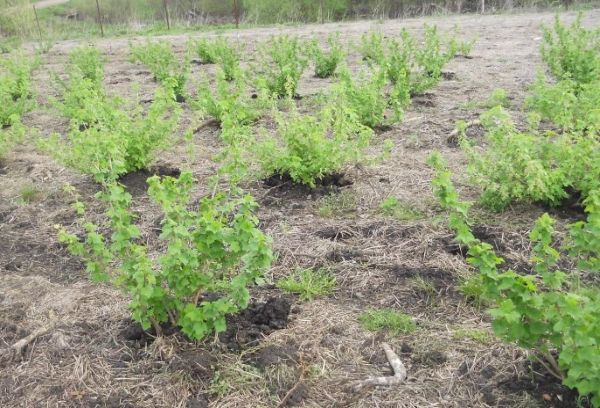
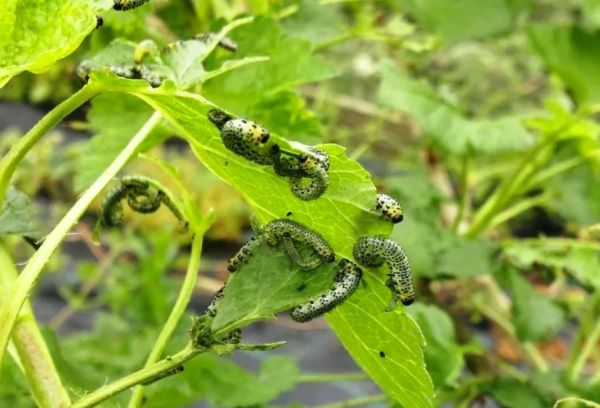
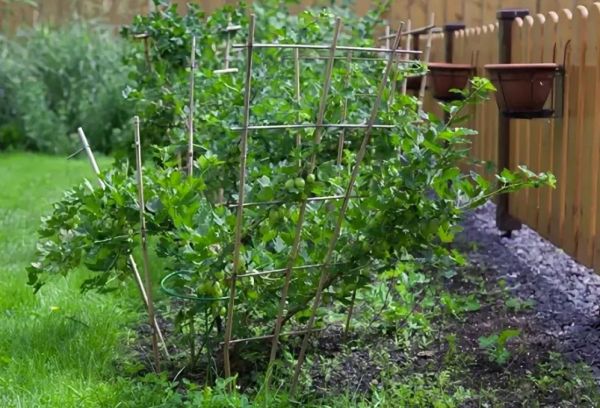
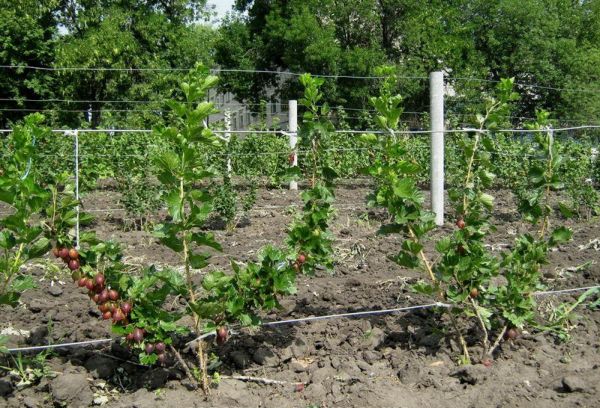
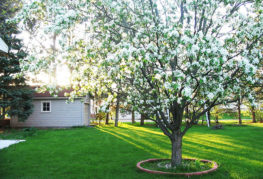
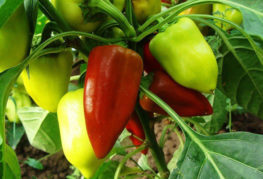
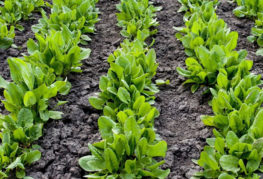
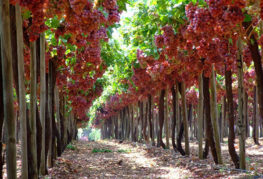
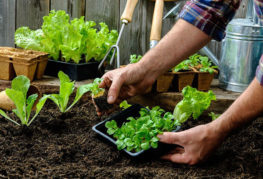
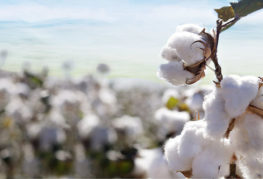
and will be published shortly.